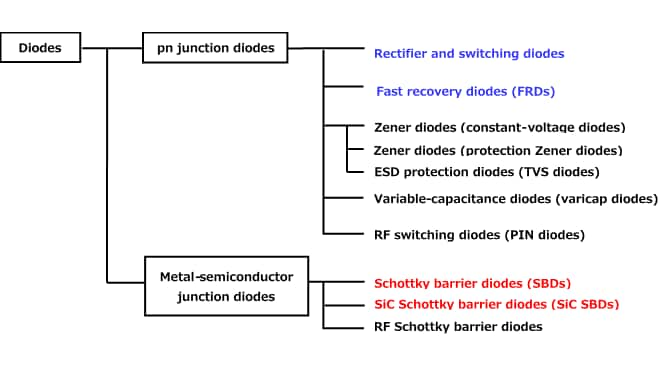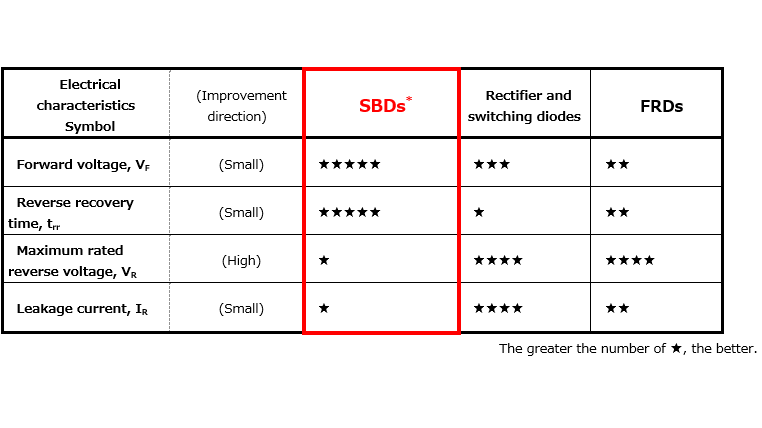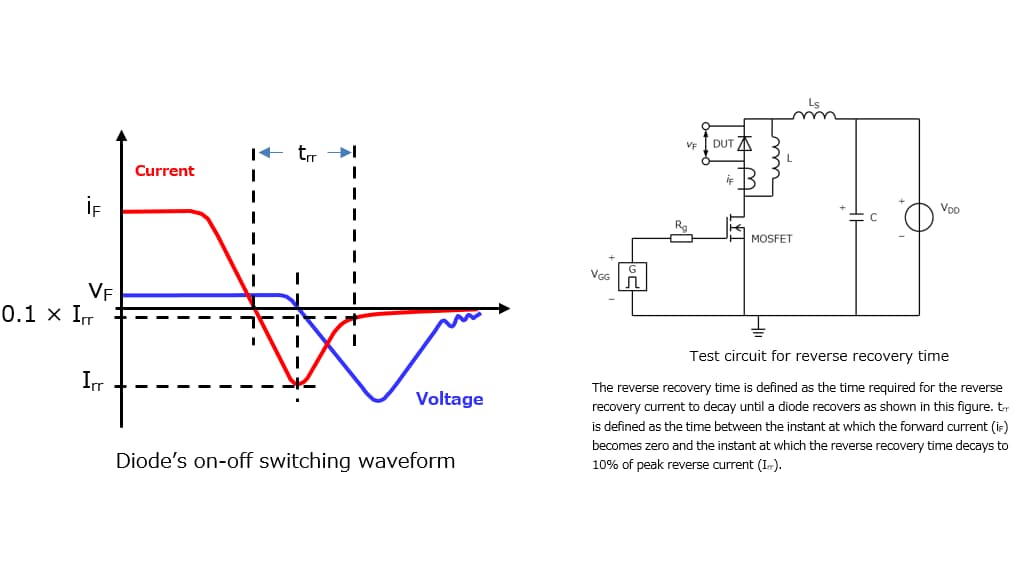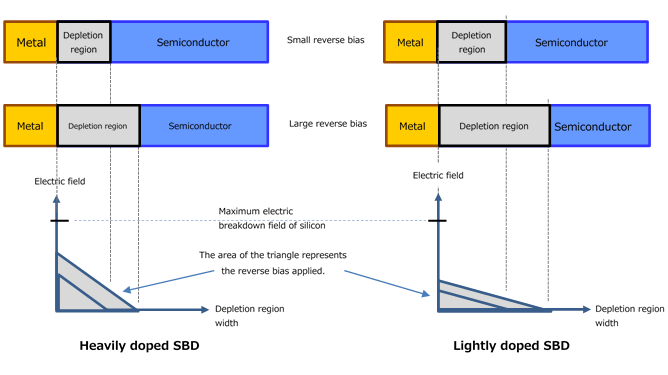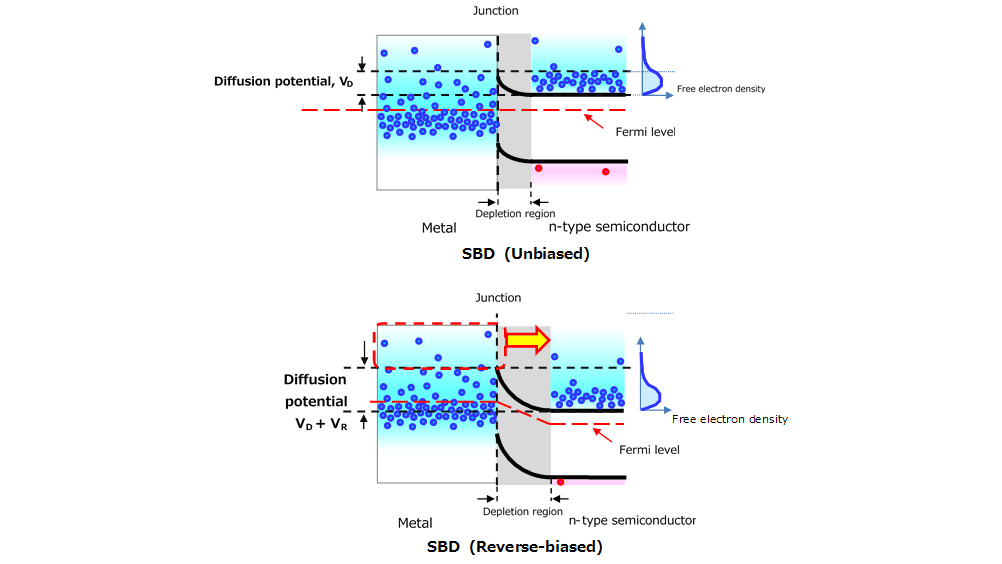- General Top
- SEMICONDUCTOR
- STORAGE
- COMPANY
-
My ToshibaSemicon
- Semiconductor Top
-
ApplicationsAutomotive
Body Electronics
xEV
In-Vehicle Infotainment
Advanced Driver-Assistance Systems (ADAS)
Chassis
IndustrialInfrastructure
BEMS/HEMS
Factory Automation
Commercial Equipment
Consumer/PersonalIoT Equipment
Healthcare
Wearable Device
Mobile
Computer Peripherals
-
ProductsAutomotive Devices
Discrete Semiconductor
Diodes
Transistors
Logic ICs
Analog Devices
Digital Devices
Wireless Devices
※
: Products list (parametric search)
Power SemiconductorsSiC Power Devices
※
: Products list (parametric search)
Isolators/Solid State RelaysPhotocouplers
Digital Isolators
Solid State Relays
Fiber Optic Transmitting Modules
※
: Products list (parametric search)
MOSFETsIGBTs/IEGTsBipolar Transistors※
: Products list (parametric search)
Diodes※
: Products list (parametric search)
MicrocontrollersMotor Driver ICsIntelligent Power ICs※
: Products list (parametric search)
Power Management ICsLinear ICs※
: Products list (parametric search)
General Purpose Logic ICsLinear Image SensorsOther Product ICsOther Product ICs
※
: Products list (parametric search)
-
Design & Development
-
Knowledge
- Where To Buy
- Part Number & Keyword Search
- Cross Reference Search
- Parametric Search
- Stock Check & Purchase
This webpage doesn't work with Internet Explorer. Please use the latest version of Google Chrome, Microsoft Edge, Mozilla Firefox or Safari.
require 3 characters or more. Search for multiple part numbers fromhere.
The information presented in this cross reference is based on TOSHIBA's selection criteria and should be treated as a suggestion only. Please carefully review the latest versions of all relevant information on the TOSHIBA products, including without limitation data sheets and validate all operating parameters of the TOSHIBA products to ensure that the suggested TOSHIBA products are truly compatible with your design and application.Please note that this cross reference is based on TOSHIBA's estimate of compatibility with other manufacturers' products, based on other manufacturers' published data, at the time the data was collected.TOSHIBA is not responsible for any incorrect or incomplete information. Information is subject to change at any time without notice.
require 3 characters or more.
3-4. Forward voltage
The forward voltage is the voltage across a diode that occurs when it is conducting in the forward direction. The current and voltage characteristics of a diode are determined by its diffusion barrier (diffusion potential). The forward voltage, especially in the small current region, is proportional to the diffusion potential. (The forward voltage in the high-current region is also affected by series resistance as described in Section 3.6.) In the case of a pn junction, the diffusion potential is equal to a difference in potential between the lower edges of the conduction bands of the n-type and p-type semiconductors. In the case of a metal-semiconductor junction, the diffusion potential is equal to a difference between the work functions of the n-type (or p-type) semiconductor and the metal. Figure 3-5 shows unbiased pn and metal-semiconductor junctions. The diffusion potential of the pn junction changes with the dopant concentration, but only slightly. In contrast, the diffusion potential of a metal-semiconductor junction depends on the metal joined with the n-type semiconductor. Generally, the diffusion potential of the metal-semiconductor junction is lower than that of the pn junction. Figure 3.6 shows the VF–IF curves of metal-semiconductor junctions with different metals.
Figure 3-7 compares the VF–IF curves of the 1SS427 switching diode (VR = 80 V) and the 1SS416 SBD (VR = 30 V). The SBD provides a larger forward current than the switching diode at the same forward voltage.
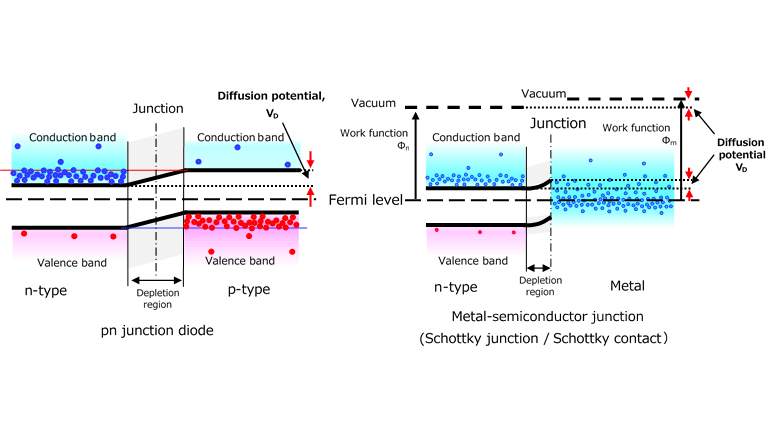
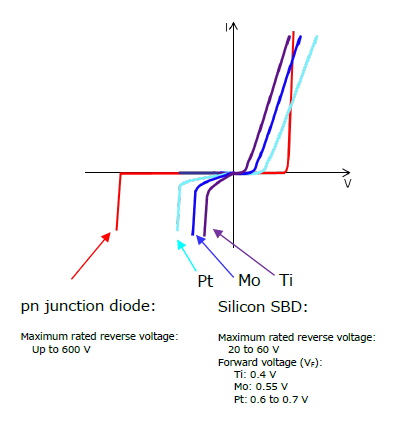
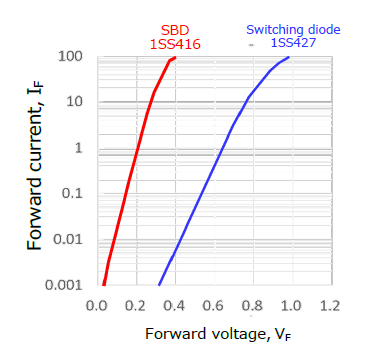
Chapter3 Basics of Schottky Barrier Diodes
Related information
- Products
Schottky Barrier Diodes - Application Notes
Application Notes - FAQs
Diodes - Parametric Search
Schottky Barrier Diodes - Stock Check & Purchase
Stock Check & Purchase
